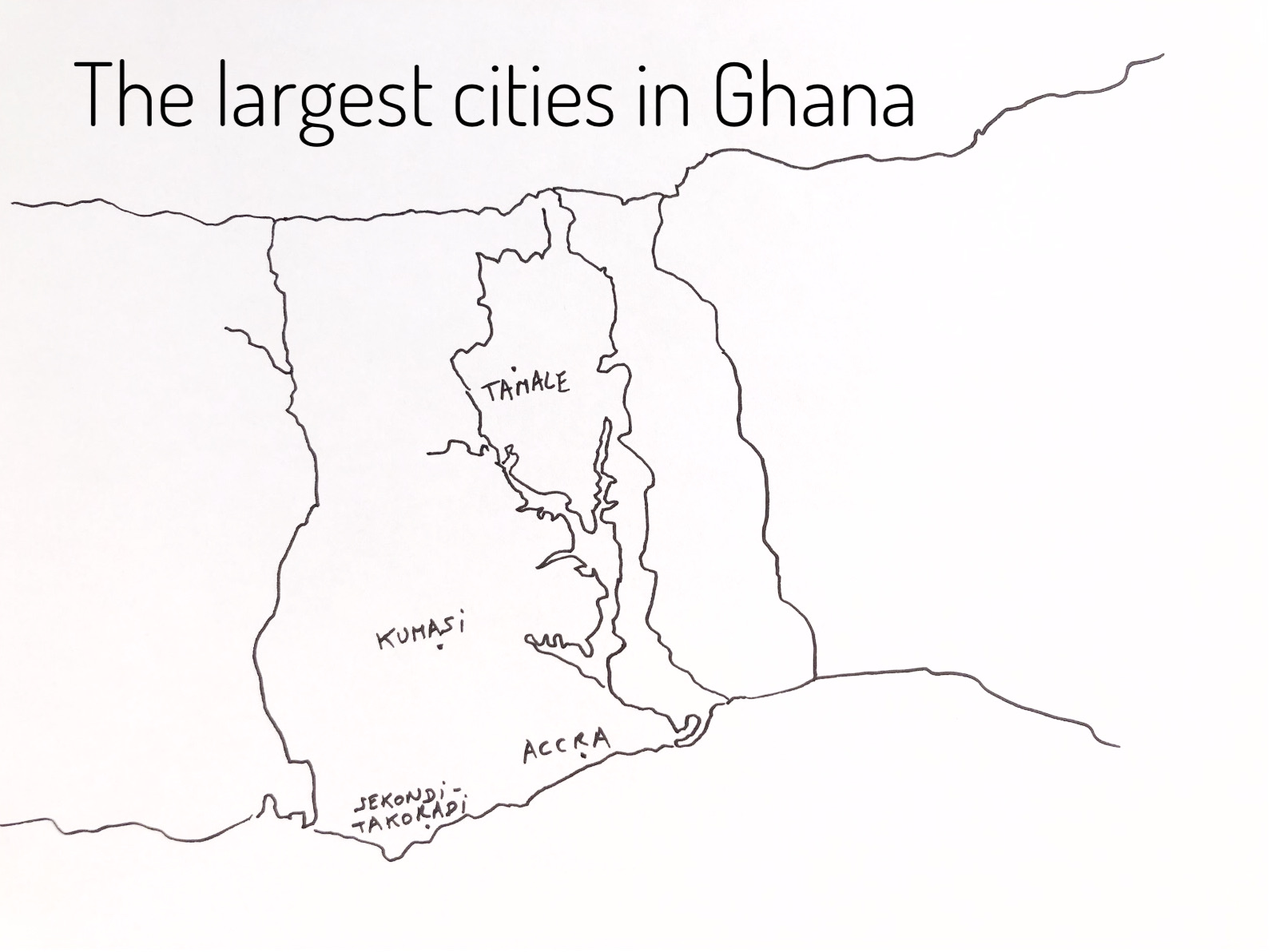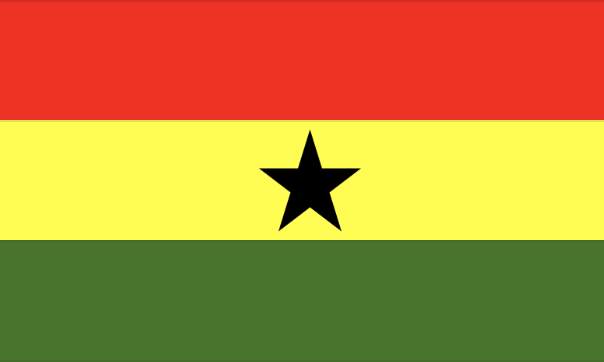Ghana is a West African country located on the Gulf of Guinea and covers an area of approximately 238,540 square kilometers. Its independence dates back to March 6, 1957, and the population of this country is estimated at about thirty million inhabitants. To discover more about this country, we suggest you discover the biggest cities of Ghana, their history, and their attractions.
1. Accra, the capital of Ghana
The population of the capital is estimated at about 2.5 million inhabitants. It is an African city that is constantly growing, it is estimated that the population of the city increases by 1.5% per year. But with its agglomeration, the population increases to more than 5 million inhabitants. Accra is therefore the economic and political center of the country.
The area of the city of Accra is 185 square kilometers.
What to do in Accra, Ghana?
In Accra, everything usually starts with the discovery of independence square. Then after being assaulted by the mugginess of the city center, it might be time to head to the coast. On a cultural level, why not discover Fort Osu? It is also called Fort Christianborg. It is a fortification dating from 1652-1659 and was built by a Dutch merchant to defend the city and the trading post. A place that also recalls a sad page of Africa since this fort is linked to slavery. Then always in a commemorative spirit and a work of memory, it is possible to go to the Mausoleum of Kwame Nkrumah located in the south of the city. A place that pays tribute to the first president of the Republic of Ghana.
2. Kumasi, the second most populous city in the country
The other major city in Ghana is Kumasi. It is located in the Ashanti region in southern Ghana. A city in the south of the country, but still about 200 kilometers from the coast.
3. Sekondi-Takoradi
This port city along the Gulf of Guinea is the third largest city in Guinea. This Ghanaian city has about 600,000 inhabitants and plays a significant role in the country’s economy. It is indeed a major industrial and commercial center in Ghana. The major industries of this city are related to wood, tobacco but also shipbuilding. The influence of the city has been facilitated by the presence of a railroad line. Indeed, Sekondi-Takoradi is located on the railway line that connects the cities of Kumasi and Accra.
It should be noted that the city of Sekondi-Takoradi was in fact born of the twinning of two neighboring cities. The cities of Takoradi and Sekondi date back to 1946.
4. Tamale, one of the largest cities in Ghana
This city in northern Ghana is one of the largest cities in the country in terms of population. In 2016, the official population was 427,054 and in 2021, estimates put the population at around 445,000.
Tamale is a city that lies at an average altitude of 180 meters. It is composed mainly of the Dagomba ethnic group and the religion of this ethnic group is Islam.
The rainy season extends from May to October. The dry season takes place the other part of the year between November and March.
5. Achiaman
This city is located in the southeast of the country and is in the agglomeration of the capital. As such, it has experienced strong growth.
6. Sunyani
The city of Sunyani is located in the southwest of the country in the Brong Ahafo region at an average altitude of 300 meters. Its population with its agglomeration amounts to about 250,000 – 300,000 inhabitants.
Situated 300 kilometers by road from the Ghanaian coast, the town of Sunyani is located in a forest region of Ghana. Originally, the town was a stopping place for elephant hunters in the 19th century. Then around 1924, the British settlers built some administrative buildings. But it is with the construction of the road to Kumasi that the town of Suyanni really took off.
The town’s activity revolves around the production of cocoa and kola nuts. It is worth noting the presence of agriculture, which is essentially focused on the cultivation of corn, yams, and plantains.
7. Cape Coast, one of the most populated cities in Ghana
This Ghanaian city is located on the coast in the south of the country, 150 kilometers west of the capital. This city is known to be the capital of the Fantis ethnic group. It is for this reason that Cape Coast is also known as Oguaa, the Fanti name of the city. Oguaa (Cape Coast) is one of the most populated cities in Ghana with a population of about 160,000 inhabitants when you take into account its agglomeration.
Historically, the creation of the city dates back to the 15th century. The city would have been founded by the Portuguese but the fort (Fort Carlsborg) was built by the Swedes during their occupation of this part of Ghana between 1653 and 1664. It should be noted that the Portuguese once called the city “Cabo Corso”. Today the fort is a museum and was classified by UNESCO in 1979, more than forty years ago. The fort has become a place of commemoration for many foreign visitors who come to remember the sad period of the “black slave trade” (slavery).
It should be noted that this region had been colonized by the Swedes who had named it the Swedish Gold Coast. And it is from this name that the city takes its name today.
8. Obuasi
This city in the south of the country is also one of the most populated cities in the country. Obuasi is located on the railroad line that connects Kumasi and Sekondi-Takoradi.
If this city in Ghana is known worldwide, it is most certainly because it is home to one of the largest gold mines in the world. The operator of the deposit is none other than Anglogold Ashanti. (a mining company whose headquarters are in South Africa and which is listed in New York. Anglogold Ashanti was created about twenty years ago and is the third largest gold producer in the world)
9. Teshie
This little-known town in Ghana is actually a locality within the Accra metropolitan area. Its proximity to the capital makes the town a neighborhood of Accra rather than a real urban entity. Indeed, with the constant growth of the capital, Teshie has been absorbed into what is now called the greater Accra area. Nevertheless, the inhabitants of the region know this place for its beach simply called Teshie Beach.
Originally this big city was a small fishing village. In the 18th century, the Danes settled in Teshie and built the Augustaborg fort (now in ruins) in 1787. The British took the colony from the Danes and remained the occupiers of the town until Ghana’s independence on March 6, 1957.
10. Tema
Tema is also a city that is part of the Accra urban area. Like the city of Teshie, the city of Tema is located in the east of the capital. Nevertheless, Tema is a city with an important economic activity thanks to the presence of a large seaport. This port receives important traffic of containers for the neighboring landlocked countries such as Burkina Faso or Mali. The managers of the port are none other than the companies: Bollore Africa Logistics and the Ghana Ports Authority, also known as GPHA.
11. Medina Estates (Madina)
This city is also located in the urban area of Greater Accra. It has a population of about 160,000, although precise statistics do not necessarily exist for the city.

